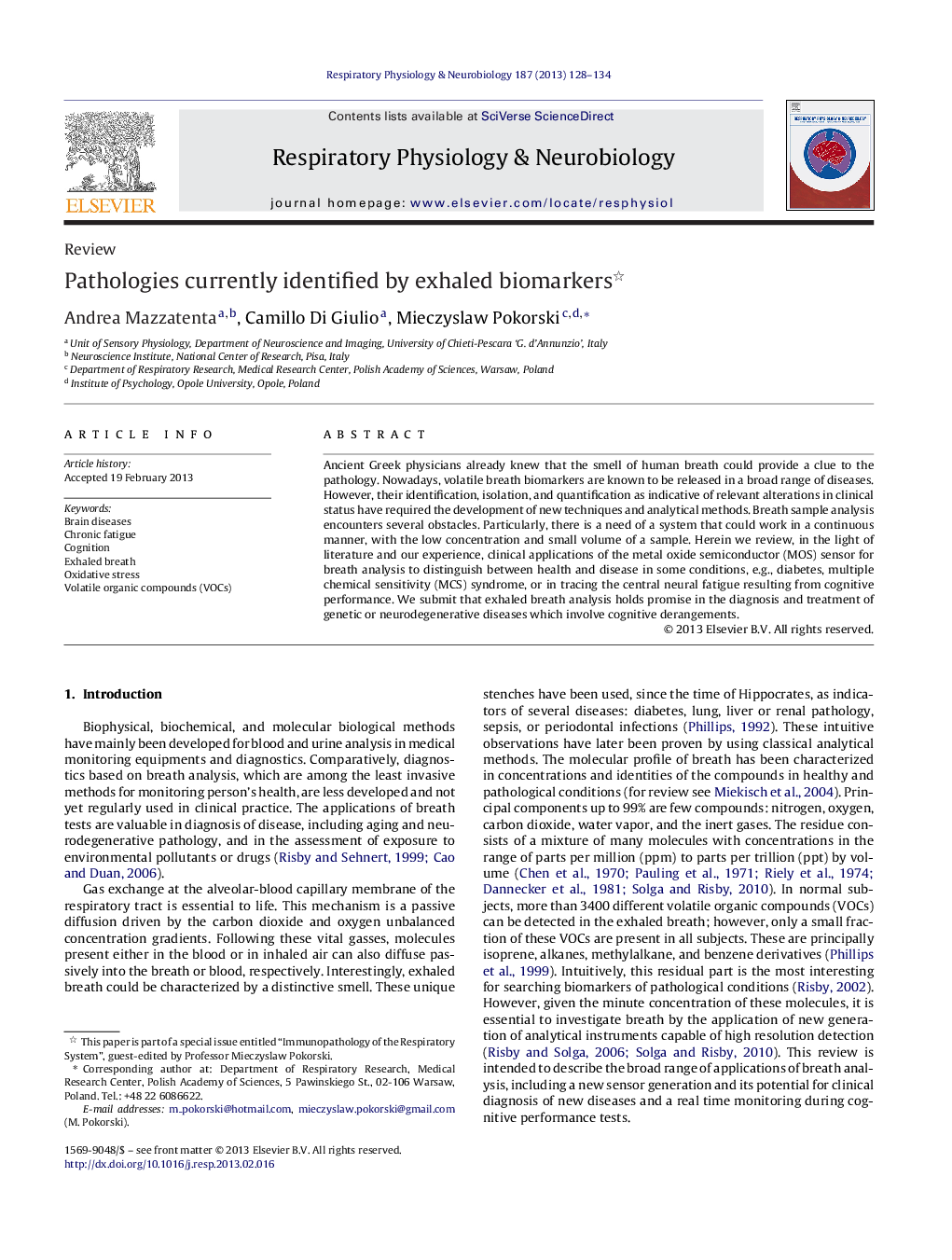| Article ID | Journal | Published Year | Pages | File Type |
|---|---|---|---|---|
| 2847188 | Respiratory Physiology & Neurobiology | 2013 | 7 Pages |
Ancient Greek physicians already knew that the smell of human breath could provide a clue to the pathology. Nowadays, volatile breath biomarkers are known to be released in a broad range of diseases. However, their identification, isolation, and quantification as indicative of relevant alterations in clinical status have required the development of new techniques and analytical methods. Breath sample analysis encounters several obstacles. Particularly, there is a need of a system that could work in a continuous manner, with the low concentration and small volume of a sample. Herein we review, in the light of literature and our experience, clinical applications of the metal oxide semiconductor (MOS) sensor for breath analysis to distinguish between health and disease in some conditions, e.g., diabetes, multiple chemical sensitivity (MCS) syndrome, or in tracing the central neural fatigue resulting from cognitive performance. We submit that exhaled breath analysis holds promise in the diagnosis and treatment of genetic or neurodegenerative diseases which involve cognitive derangements.
► Volatile breath markers distinguish health from disease. ► Multiple chemical sensitivity (MCS) syndrome underlies chronic fatigue. ► Electronic nose identifies ‘smellprint’ characteristic of lung cancer. ► Volatile organic compounds (VOCs) change in exhaled breath during cognitive tasks.
